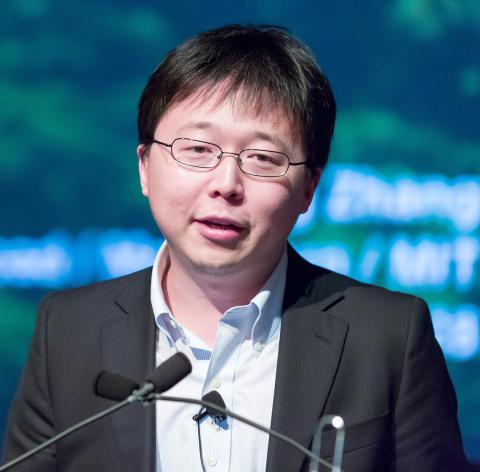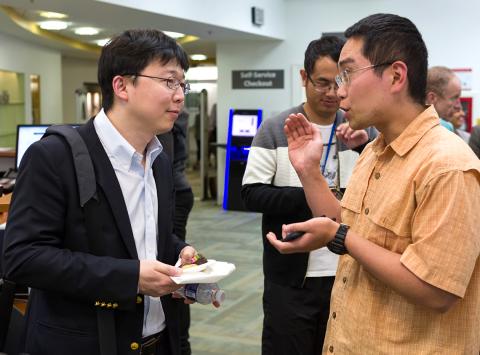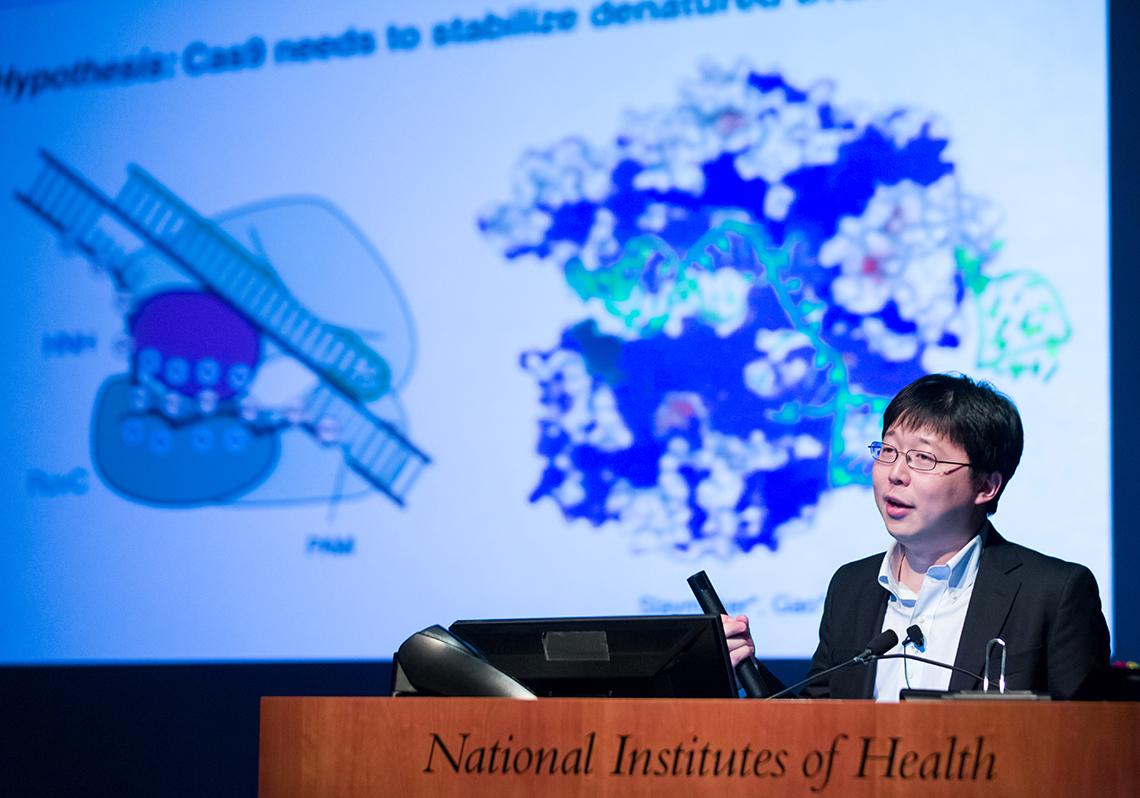CRISPR Becoming Crisper, More Ubiquitous, Says Zhang

Photo: Daniel Soñé
What plastics were to a young Dustin Hoffman in The Graduate and what computers were to a young Wozniak and Jobs in their garage-era tinkering is now occupied by CRISPR technology, suggested Dr. Feng Zhang of MIT in the final Wednesday Afternoon Lecture of 2017 on June 28.
Speaking in a packed Masur Auditorium, where he posed for selfies with audience members before taking the stage, Zhang traced CRISPR technology from its origins as a mechanism developed by bacteria to defend itself against pathogens to its current status as a sophisticated gene editor.
“It’s like a cursor in Microsoft Word,” said Zhang. “Wherever you can place it, you can make the edit.”
Only 35, Zhang has already revolutionized science in two ways, said NICHD microbiologist Dr. Gigi Storz, who introduced him. He is an alumnus of optogenetics pioneer Dr. Karl Deisseroth’s laboratory at Stanford and, since early 2011, has been working to harness clustered regularly interspersed short palindromic repeats, or CRISPR, systems for genome editing.
“There is enormous biological diversity in nature,” Zhang said. “Even in bacteria, there is amazing and enormous diversity. We hope to understand and harness some of them for emerging biotechnologies.”

Photo: Daniel Soñé
Even common detergents used in household kitchens include lipases, cellulases “and all sorts of enzymes harnessed from natural sources,” he explained.
Zhang’s interest is the more than 6,000 human genetic diseases, most of which cannot yet be treated. CRISPR technology may one day be able to reverse damaging mutations that cause illness, he predicted. Using homology-directed repair, scientists can already modify a single DNA base.
An enzyme produced by the CRISPR system known as Cas9 has been used to bind to a specific strand of DNA and cut it, eliminating the function of a targeted gene. But there has been concern about so-called “off-target” effects using Cas9—unwanted side effects that could be harmful to living organisms.
Zhang and his colleagues are improving Cas9 targeting specificity via engineering. Studies of its crystal structure and surface charge distribution have pushed the technology to the point that human studies are now foreseeable.
Zhang, whose talk can be seen in full at https://videocast.nih.gov/summary.asp?Live=23704&bhcp=1, said RNA guides for the CRISPR system can be easily synthesized and that loss-of-function and gain-of-function genetic screening are now possible. “We can now map noncoding elements of the genome,” he said.
Zhang and colleagues have modeled brain diseases in mice using CRISPR technology, especially in the context of autism, where they have found that the CHD8 gene is an important regulator of behavior.

Photo: Daniel Soñé
“CRISPR diversity is also very exciting,” said Zhang, who is actively exploring the numerous distinct CRISPR systems with colleagues including Dr. Eugene Koonin, a senior investigator at the National Library of Medicine’s National Center for Biotechnology Information.
Cas9 is the best known editing system, but there are many others, he said, including Cas12, Cas13a and Cas13b.
NLM’s Koonin, whom Zhang described as “a genius,” is helping explore the diversity in two classes—single subunit and multi-subunit—in a systematic search for novel CRISPR effector proteins.
One targeting system, known as C2c2, can be used to detect biological pathogens and is the basis of the SHERLOCK detection assay, which can identify Zika virus via its RNA signature.
“Many more powerful tools and technologies await,” Zhang assured. “There are many additional tools to be discovered.”
